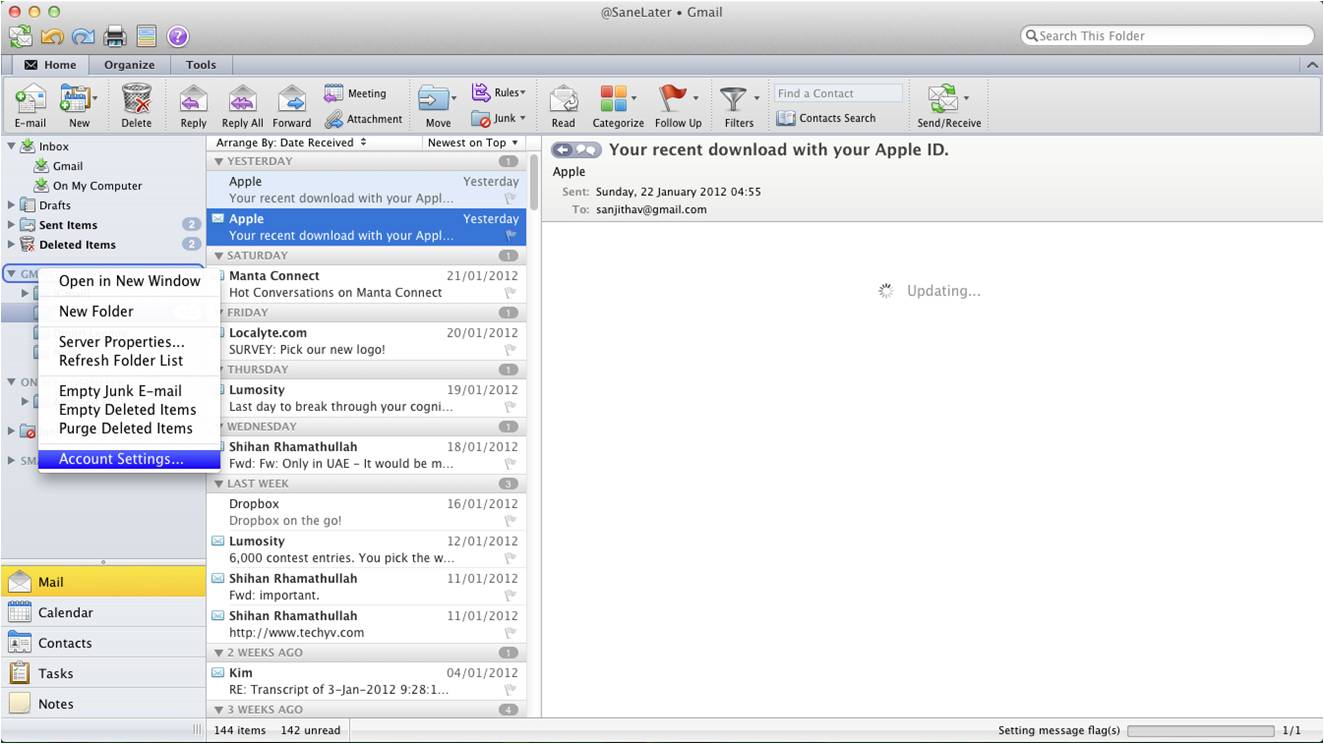Step 3 of the Set up my Microsoft 365 account series. Add your Microsoft 365 email to Outlook for Mac. You'll then be ready to send and receive business emails. Watch a short video of this task farther down the page. (Don't have the app? Microsoft Office 365 Configuring Outlook 2011 for Office 365 (Mac) This page provides instructions on configuring Outlook 2011 for Mac to access your Office 365 account using Exchange.



Outlook 2011 for Mac offers hundreds of ways to customize the way messages are presented, processed, and replied to. You can access these settings in the Outlook Preferences dialog, which you open by choosing Outlook→Preferences from the menu bar. The settings that affect mail are found in Personal Settings group as well as the E-Mail. See Add an email account to Outlook for instructions. Set up Exchange account access using Mac OS X 10.10 or later. If you're running Mac OS X version 10.10 or later, follow these steps to set up an Exchange email account: Open Mail, and then do one of the following: If you've never used Mail to set up an email account, the Welcome to Mail page.
Setup Outlook Mac Office 365

Configure Outlook For Mac 2011 Office 365 Email
Outlook 2011 for Mac offers hundreds of ways to customize the way messages are presented, processed, and replied to. You can access these settings in the Outlook Preferences dialog, which you open by choosing Outlook→Preferences from the menu bar.
Configure 2011 Outlook Mac For Office 365
The settings that affect mail are found in Personal Settings group as well as the E-Mail group in the Outlook Preferences dialog. Notice these settings in particular:
Configure Outlook For Mac 2011 Office 365 Login
General: Click the General icon in the Outlook Preferences dialog to find the Make Default button.
Accounts: Click Accounts in the Outlook Preferences dialog to display the Account dialog. Be sure to click the Advanced button in the Account dialog and choose the Folders tab.
Notifications & Sounds: Click Notifications & Sounds in the Outlook Preferences dialog to adjust what kinds of sounds and visual notifications Outlook generates as you work with mail.
Categories: Click Categories in the Outlook Preferences dialog to classify just about everything in Outlook.
Fonts: Click Fonts in the Outlook Preferences dialog to choose default fonts for composing HTML and plain text messages.
AutoCorrect: Click AutoCorrect in the Outlook Preferences dialog to edit AutoCorrect and AutoFormat options for text, as well as bullets and numbering.
Reading: Click Reading in the Outlook Preferences dialog to change some of the default settings. Of course, you’re free to choose the settings that work best for you.
Composing: Click Composing in the Outlook Preferences dialog to change what kind of formatting is applied to messages you reply to.
Signatures: Click Signatures in the Outlook Preferences dialog to add a signature.
Rules: Click Rules in the Outlook Preferences dialog to set rules. Alternatively, choose Tools→Rules from the menu bar.
Schedules: Click Schedules in the Outlook Preferences dialog to tell Outlook to perform operations you specify at predetermined times.